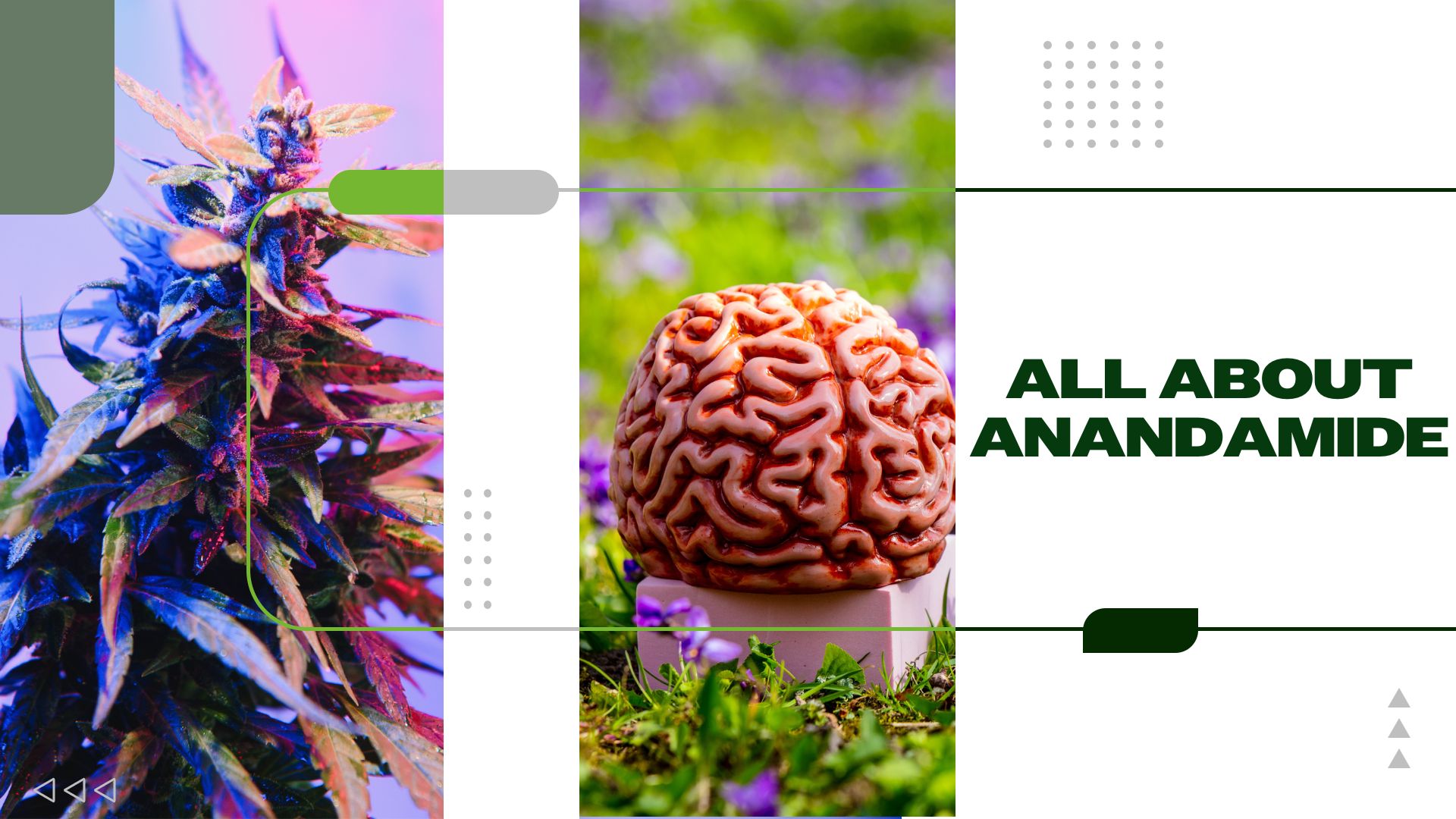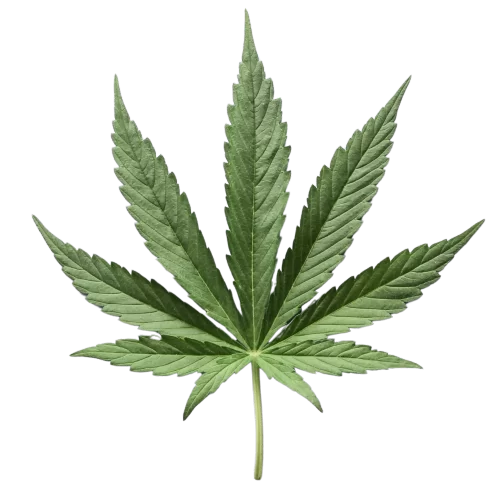You may have heard of cannabinoids—a class of active chemical compounds such as THC and CBD that are found in the cannabis plant. A surprising fact is that our bodies make cannabinoids on their own. These molecules are called “endocannabinoids,” one of which is anandamide (AEA).
William Devane and Ralph Mechoulam’s research group discovered anandamide in 1992, and it was the first endocannabinoid found (1). The name hails from the Sanskrit word “ananda,” meaning internal bliss. Let’s explore this fascinating compound and how it can play a role in the future of cannabinoid-based medicine.
What Exactly Is Anandamide?
If you’ve ever experienced a “runner’s high,” that’s anandamide at work. This molecule is responsible for the sensation of good feeling and pain relief brought on by intensive exercise (2). The body makes endocannabinoids on demand in response to trauma, like exercise, or lots of nerve activity. While having similar effects, endocannabinoids—which are made from lipids (fat) in cells—are different from “phytocannabinoids” like THC and CBD that are made by plants.
Although anandamide does not structurally resemble THC, the famously psychotropic phytocannabinoid, both kinds of cannabinoids interact with the body’s endocannabinoid system (ECS). The ECS consists of three main parts: endocannabinoid messengers, cannabinoid (CB) receptors, and the enzymes that make and break down cannabinoids.
Cannabinoids like anandamide (endocannabinoid) and THC (phytocannabinoid) must interact with CB receptors to influence our body. Anandamide and THC are partial activators of both CB receptors (CB1 and CB2), which explains their similar effects (4). Mice studies have shown that the relief of pain and anxiety dubbed the runner’s high depends on activating both receptors (5).
The Magic of Cannabinoid Receptors
The existence of two cannabinoid receptors was confirmed only 20 years ago (2). These receptors affect virtually every organ system, and nearly all animals have an endocannabinoid system. Without endocannabinoids like anandamide triggering both cannabinoid receptors, the runner’s high isn’t possible.
Exercise increases levels of both anandamide and β-endorphin, a self-produced opioid formerly thought to cause this phenomenon. In 2015, researchers demonstrated that only mice with intact cannabinoid receptors experienced less pain and anxiety following running exercises (5). Mice without such cannabinoid receptors did not have the same recovery benefits, as endocannabinoid activation of the CB1 and CB2 receptors works both in and outside the brain to reduce anxiety and pain.
Cannabinoid receptors can affect important processes like pain, anxiety, mood, inflammation such as neuroinflammation, brain plasticity and development, immune cell function, connective tissue repair, metabolism, bone growth, autonomic tone, and more (1)(2)(3). Over the years, anandamide has become the most studied endocannabinoid when it comes to brain reward circuitry (1).
Anandamide and Substance Use Disorders
Anandamide, also called the “bliss” molecule, is thought to play a key role in our interpretation of how pleasurable drugs and alcohol are (1). AEA may reinforce the addictive potential of both cannabinoid and non-cannabinoid drugs, such as alcohol, nicotine, opiates, and cocaine. The hedonistic sensations made possible by the ECS and enhanced by anandamide likely contribute to the development and maintenance of substance use disorders.
CB1 receptors are among the most densely expressed receptors in the brain. Through clinical and animal studies, activating CB1 receptors has been implicated in drug-seeking behavior, reward, withdrawal, and relapse (6). As a result, medical experts have explored the possibility of targeting the ECS in the treatment of substance use disorders. For example, we have already seen the use of cannabis as an aid for recovering from opioid addiction, though much more research is needed to support such methods (11).
Various researchers have ongoing investigations since CBD may potentially help reduce short-term cravings and withdrawal symptoms in certain substance use disorders like cannabis dependence. Other ECS treatments, like enzyme inhibition for alcohol use disorder, are promising but are still being investigated and require larger studies to prove that the benefits outweigh the risks (7).
The Future of Anandamide in Healthcare
Anandamide may potentially serve as a biomarker, a measurable enzyme in the blood that can help diagnose or differentiate subgroups of patients. In small studies, anandamide levels were found to be low in participants with autism and altered in those with other neuropsychiatric disorders like post-traumatic stress disorder (PTSD) and attention-deficit/hyperactivity disorder (ADHD) (8)(9). This may explain why CBD, CBDV, and THCV can potentially help with these conditions’ symptoms and why THC could make them worse.
It is still too early to tell how exactly anandamide levels can meaningfully help providers diagnose, differentiate, or measure treatment progress, but early studies reveal some interesting findings. Anandamide levels increased in schizophrenic patients after CBD treatment as well as traditional antipsychotic drugs, so it also could be used to track patients’ response to cannabinoid treatments one day (6)(9). Such an approach would require much larger studies to confirm the efficacy of cannabinoids as biomarkers.
Future studies will also have to continue investigating anandamide and the working theory of clinical endocannabinoid deficiency (CECD) (10). Just like how brain disorders arise from deficiencies in neurotransmitters, it is thought that deficiencies in the ECS and alterations in levels of endocannabinoids can cause chronic health problems. In a 2016 review, E. B. Russo presents recent evidence that the theory of CECD could underlie migraines, fibromyalgia, and irritable bowel syndrome (IBS) (10).
Objective data is still lacking in this subject, but the strongest evidence is the significant changes in the levels of anandamide and supportive imaging. With further study, tracking AEA may serve as a helpful reflection of a patient’s overall ECS tone, diagnosis severity, and response to cannabinoid treatment. One day, anandamide will help us enter the next era of cannabis medicine.
1. Scherma, M., Masia, P., Satta, V., Fratta, W., Fadda, P., & Tanda, G. (2019). Brain activity of anandamide: a rewarding bliss?. Acta pharmacologica Sinica, 40(3), 309–323. https://www.nature.com/articles/s41401-018-0075-x
2. Silver R. J. (2019). The Endocannabinoid System of Animals. Animals : an open access journal from MDPI, 9(9), 686. https://www.mdpi.com/2076-2615/9/9/686
3. DOH DCRx. (2015). An Introduction to the Biochemistry & Pharmacology of Medical Cannabis. [PowerPoint Slides]. Retrieved from: https://dchealth.dc.gov/dcrx
4. Pertwee R. G. (2008). The diverse CB1 and CB2 receptor pharmacology of three plant cannabinoids: delta9-tetrahydrocannabinol, cannabidiol and delta9-tetrahydrocannabivarin. British journal of pharmacology, 153(2), 199–215. https://bpspubs.onlinelibrary.wiley.com/doi/full/10.1038/sj.bjp.0707442
5. Fuss, J., Steinle, J., Bindila, L., Auer, M. K., Kirchherr, H., Lutz, B., &; Gass, P. (2015, October 20). A runner’s high depends on cannabinoid receptors in mice. PNAS. Retrieved September 10, 2021, from https://www.pnas.org/content/112/42/13105.abstract
6. Batalla, A., Janssen, H., Gangadin, S. S., & Bossong, M. G. (2019). The Potential of Cannabidiol as a Treatment for Psychosis and Addiction: Who Benefits Most? A Systematic Review. Journal of clinical medicine, 8(7), 1058. https://www.mdpi.com/2077-0383/8/7/1058
7. Niemela, G., & Terry, G. E. (2021). Contribution of fatty acid amide hydrolase to alcohol use disorder: A systematic review. Cannabis and Cannabinoid Research, 6(2), 105–118. https://www.liebertpub.com/doi/10.1089/can.2020.0158
8. Aran, A., Eylon, M., Harel, M., Polianski, L., Nemirovski, A., Tepper, S., Schnapp, A., Cassuto, H., Wattad, N., & Tam, J. (2019). Lower circulating endocannabinoid levels in children with autism spectrum disorder. Molecular autism, 10, 2. https://molecularautism.biomedcentral.com/articles/10.1186/s13229-019-0256-6
9. Di Marzo V. (2020). The endocannabinoidome as a substrate for noneuphoric phytocannabinoid action and gut microbiome dysfunction in neuropsychiatric disorders. Dialogues in clinical neuroscience, 22(3), 259–269. https://pubmed.ncbi.nlm.nih.gov/33162769/
10. Russo, E. B. (2016). Clinical endocannabinoid deficiency Reconsidered: Current research supports the theory in Migraine, fibromyalgia, Irritable Bowel, and Other Treatment-Resistant Syndromes. Cannabis and Cannabinoid Research, 1(1), 154–165. https://www.liebertpub.com/doi/10.1089/can.2016.0009
11. Wiese, B., & Wilson-Poe, A. R. (2018). Emerging Evidence for Cannabis’ Role in Opioid Use Disorder. Cannabis and cannabinoid research, 3(1), 179–189. https://www.ncbi.nlm.nih.gov/pmc/articles/PMC6135562/
Author, Share & Comments








